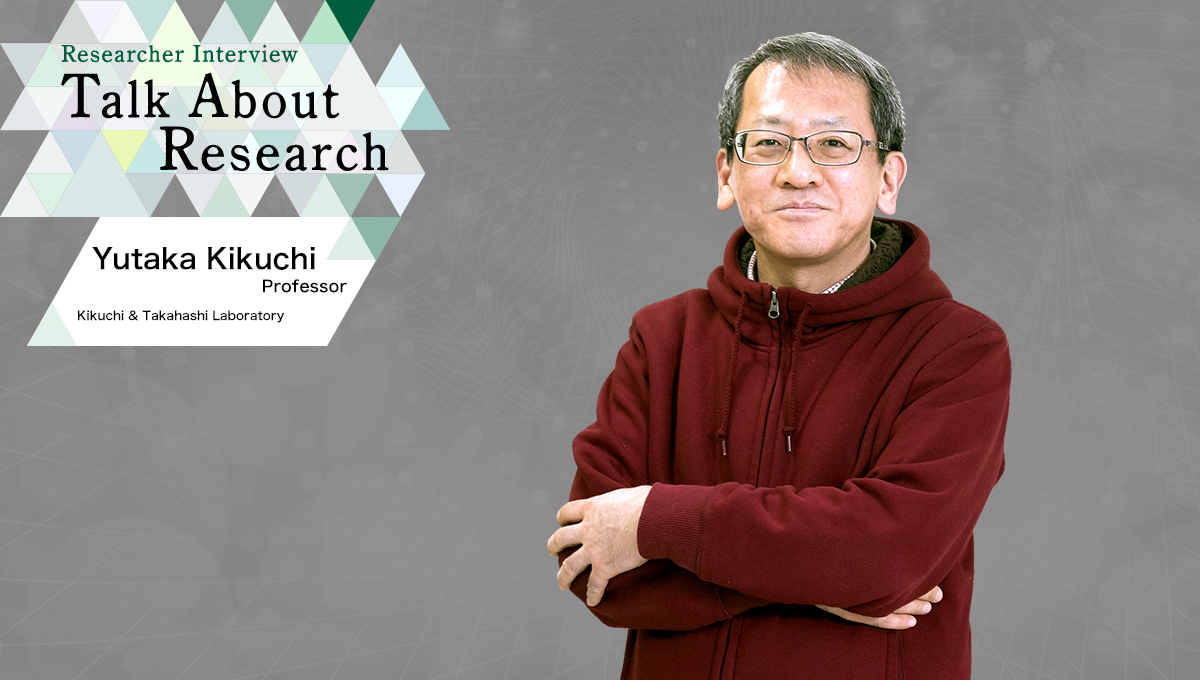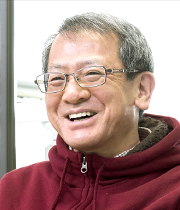Cutting edge research concerning the locomotor:
aiming to reveal the development and regeneration mechanism
Prof. Kikuchi manages the Kikuchi & Takahashi Laboratory with Dr. Takahashi, an associate professor. This lab promotes research to understand life phenomena concerning development, regeneration, and malignant transformation in an integrated way. The lab was previously called the Developmental Biology Laboratory, but as the research targets became more complicated, the laboratory name no longer reflected what they were doing.
“At first, we conducted research on early development, but our interest has changed to focus on the much later stage when the various tissues become mature. The organs are very interesting because they grow while moving by themselves,” said Prof. Kikuchi. Their research target is vertebrates, and especially the “locomotor” among the organs.

The locomotor is the collective term that includes muscle, tendons, ligaments, bones, joints, nerves, and cartilage. Such organs work cooperatively as a system to provoke movement. The locomotor is the only organ that a human being can utilize at will.
The laboratory is directed toward the entire locomotor as a system and focuses on the joint parts to see how they are connected.
“There are two reasons to research the locomotor: First, because the detail has not yet been clarified. And second, although only the chemical aspect of this kind of research has gotten attention until now, other non-chemical factors such as physical power or temperature have become more important in recent years.
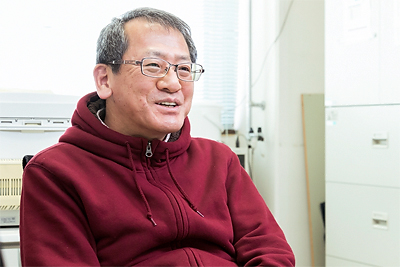
The new academic field that studies such force in an organism is called “mechanobiology,” which is a creation of the fusion of various research fields and has become quite popular in the past 10 years. Prof. Kikuchi’s locomotor research tries to approach it from the perspective of mechanobiology.
As for the research method, he conducts detailed analyses of tissue, etc., and strives to create “organoids.” He creates three-dimensional tissue that consists of muscle, tendons, and cartilage outside of an organism and tries to re-create the joint formation process while culturing.
How does a force induce the malignant transformation of cancer?
Cancer research that fully utilizes machine learning
While research on the abovementioned development, growth, and maturity clarifies the “body-forming mechanism,” cancer research aims to reveal the “breakdown mechanism.”
“Our body is maintained by repeated metabolism. And when this maintenance fails at some point, it will appear as a disease. One example of this is cancer.
Prof. Kikuchi’s laboratory conducts three-dimensional in vitro culturing of complicated cancer tissue consisting of cancer stem cells and cancer microenvironments※ and analyzes the dynamic change in the cancer tissue. From the perspective of said “mechanobiology”, the concrete method includes the measurement of stress and tension of the cancer cells in cancer tissue and the surrounding cells using various methods including machine learning of the images and studying how mechanical stimulation in the cancer microenvironment influences the process of cancer malignant transformation. He also focuses on microRNA that plays a significant role in tumor formation and works on clarification of the cancer stem cell stress resistance mechanism.
- ※Cancer microenvironment:The structure surrounding cancer cells that are formed by the substance released by cancer cells to provide better living environment for the cells.
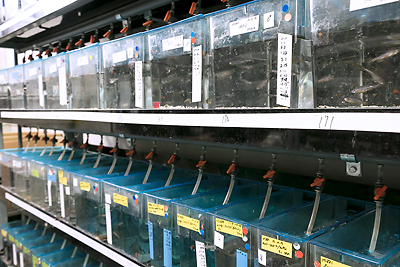
According to the professor, the “body-making mechanism” and “breakdown mechanism” have common characteristics, which are “force application” and “activity of a certain growth factor.”
The latter is TGF-β (Transforming Growth Factor-β), and this growth factor is known to be related to growth and carcinogenesis. This fact suggests that the body-forming mechanism and cancer-forming mechanism are similar as life mechanisms.
The professors understand that these two totally different mechanisms in terms of phenomena use a common mechanism existing in our body, and that sensing and response mechanisms are the same in both the locomotor and cancer.
Beyond the research field, choose an advanced research method,
“understand life,” and look ahead
Prof. Kikuchi’s research has two major characteristics. The first is to understand organisms beyond the academic field. The second is to understand organisms from information.
The first characteristic, “understanding organisms beyond the academic field,” contains the use of the devices made from plastic and rubber in addition to the introduction of mechanobiology. “Using organisms to study organisms is the basic method, but we also use plastic and rubber to assist the research in various ways,” he said.
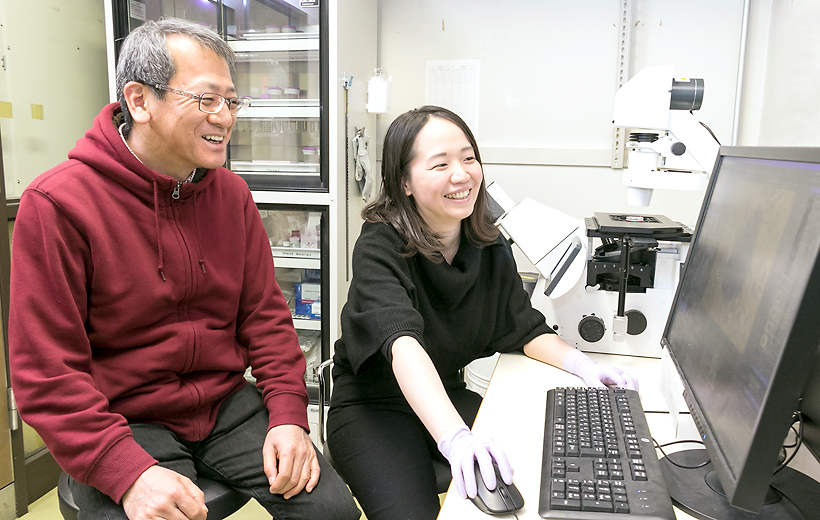
The second one, “understanding organisms from information” is research that applies machine learning and other methods to process gene information or tissue images. “Currently, the most available genome information is the human genome. We actively utilize such information. We also positively use the analysis tool of machine learning, which is one type of artificial intelligence.”
Lately, life science research using machine learning has become popular as a new research method to inductively derive new conclusions for phenomena with little data due to the difficulty in making observations or conducting experiments. His laboratory applies this to reveal the transfer termination mechanism and myocyte fusion mechanism.
Asked about the future, he presented his prospects with a smile. “Eventually, it will be possible to support the establishment of treatment methods for human disease by clarifying the organism’s formation and breakdown process. All laboratory members are patiently devoting their research towards accomplishing that. I’m wishing for a little luck...” He said that the joy of research is “understanding organism tissue by creating similar material.”
Now that the notion of the brain organoid having consciousness has become a popular topic, his research group is surely approaching the day when they will be able to understand life from theory and information.
 Opened on August 3, 2022
Opened on August 3, 2022

